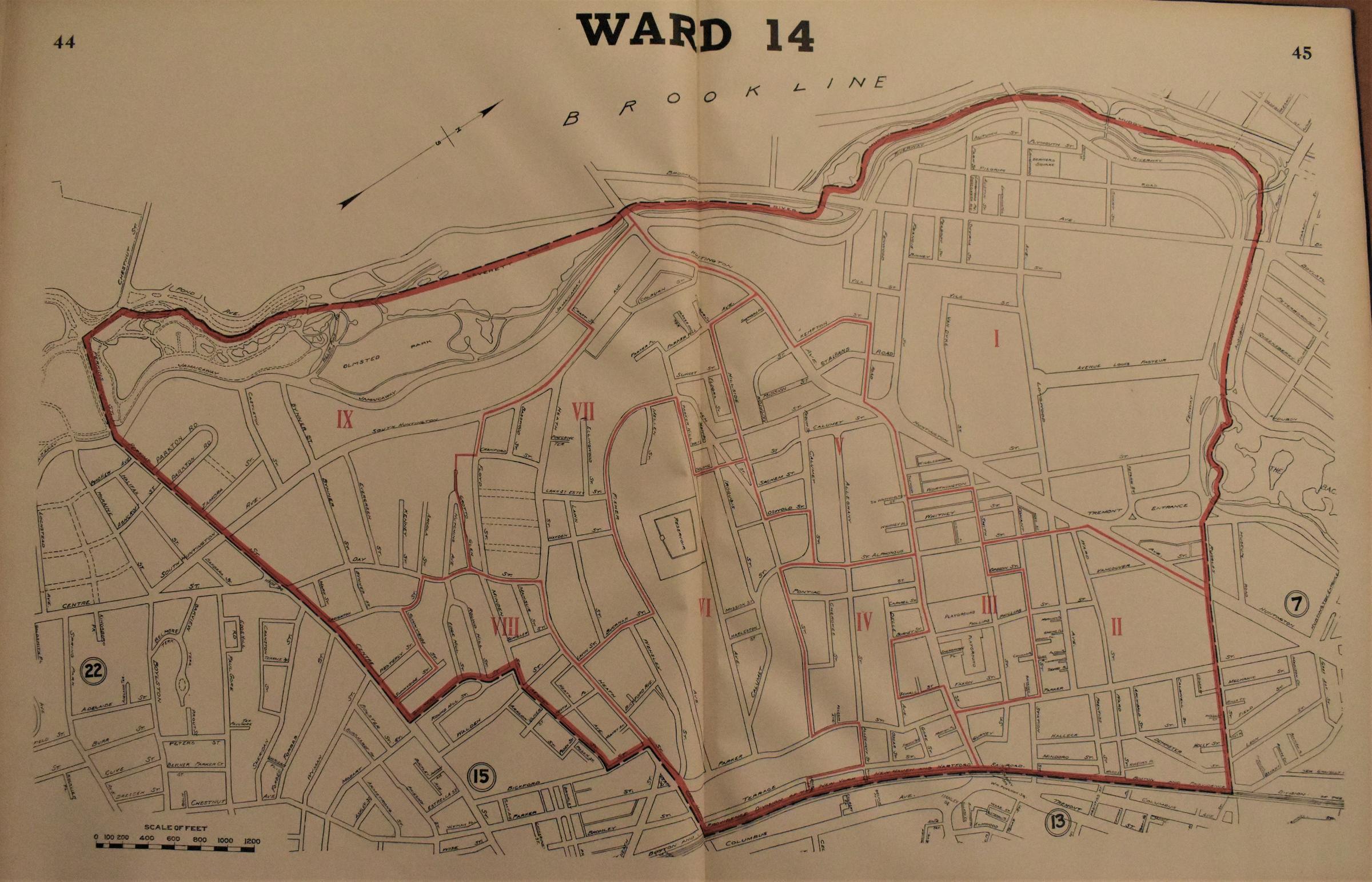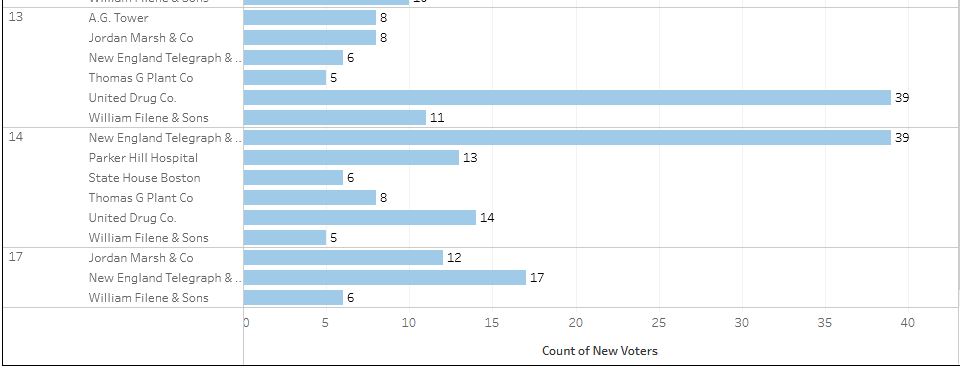The Mary Eliza Project: Ward 14 Voter Records Now Available
In Boston's Ward 14, over 1900 women registered to vote in 1920. We’ve finished transcribing our Ward 14 Women’s Voter Registers and the data is now available at Analyze Boston.
In 1920, after the passage of the 19th Amendment, Boston's women registered to vote by the thousands. The 1920 Women's Voter Registers now live at the Boston City Archives and document women's names, addresses, places of birth and occupations. Sometimes women provided additional information about their naturalization process to become a US citizen, including where their husbands were born because in 1920, a woman's citizenship status was tied to her husband's nationality.
The Mary Eliza Project, named after African American nurse, civil rights activist, and Boston voter Mary Eliza Mahoney, is transcribing these valuable handwritten records into an easily searchable and sortable dataset. We've recently finished transcribing the Ward 14 registers and have added them into our dataset!
In 1920, Boston's Ward 14 covered much of what we would now refer to as the Longwood Medical Area and Mission Hill, stretching from the Muddy River almost to Columbus Avenue. The map above shows Ward 14's boundaries. Over 1900 women living in Ward 14 registered to vote in 1920.
Ward 14 was home to a large number of foreign born women voters. Almost 1/3 of the Ward 14 women who registered to vote in 1920 were born outside of the United States. The largest contingent of foreign born women hailed from Ireland. We found 347 women who gave Irish birthplaces. We also found 91 women from Canada, 29 women from Germany, and 27 women from England as well as women from Russia, Sweden, Norway, Switzerland, and Scotland. Some entries show the complexity and changing nature of borders and identities. For example, Mary G. Teveiz of Binney Street gave her birthplace as "Armenia Turkey" and her husband's birthplace as simply "Turkey," hinting at the complicated and fraught relationship between the Armenian community and the Turkish Ottoman Empire.
While many women voters in Ward 14 worked in their own homes, a significant number worked outside the home, many at Ward 14's hospitals and medical institutions. We found over 75 women voters working as nurses or studying to be nurses in Ward 14. Other voters worked as social workers, matrons, administrators, or in other positions in local hospitals or medical facilities. Mary Hanley of Darling Street, for example, worked as a cook at Harvard Medical School.
While many new voters worked at medical institutions, we also found women employed as dressmakers, teachers, musicians, bookbinders, clerks, and more. This data visualization from scholar Laura Kitchings breaks down the top named employers of each ward. Her analysis shows that the New England Telegraph and Telephone Company was also a major employer of Ward 14 women. You can view all of Kitching's visualizations at Exploring the Mary Eliza Project: Boston Women Voters in 1920.
This new addition to our dataset holds many stories waiting to be uncovered! Dive into the dataset and let us know what you find!





